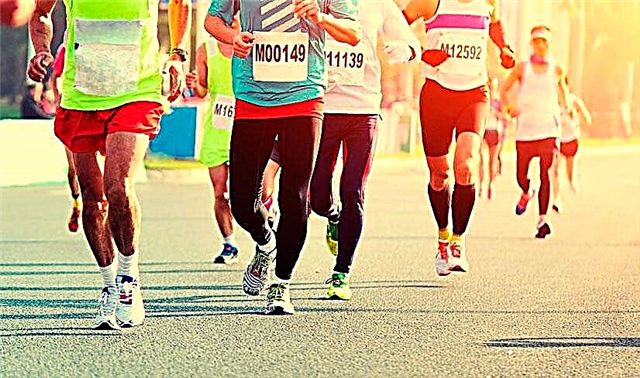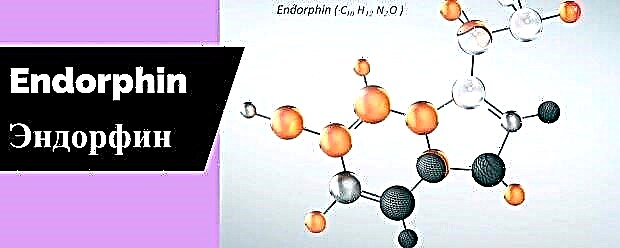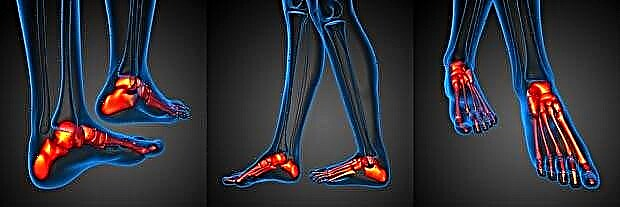Hatha yoga is about more than physical fitness. The goal of the practitioner is to dissolve in the world soul, atman. To do this, he learns to control his body with the help of asanas, lives according to certain canons and regularly practices mantras, mudras, shatkarmas.
By the way, all this is optional. There is nothing obligatory in yoga at all. In addition, that a person should do all this of his own free will, without violence against himself, and only for the purpose of self-development, and not for earnings, popularity or trends.
Differences between hatha yoga and ordinary yoga
Any teacher will name the following areas of yoga:
- Hatha - stretching, control with bandhas (locks), asanas, breathing.
- Ashtanga Vinyasa is a kind of "second level of practice", power ligaments of asanas, in which you need to be able to alternate statics, dynamics, control the position of the body, and most importantly - the movement of the spirit, not to be distracted and maintain concentration.
- Iyengar Yoga - Hatha Yoga by B.K.S.Iyengar. The popularizer of this direction for Western users managed to make the asanas understand even a child. The books of Iyengar and his daughter Geeta, as well as many centers around the world, are important proof of this. In this adaptation, philosophical moments are simplified, and more emphasis is placed on yoga gymnastics, asanas.
- Kundalini Yoga is a semi-esoteric direction, the purpose of which is to take control of sexual energy. It is surrounded by legends like "yes, they have sex there in training" and has a lot of mystical gurus who teach everything - from pulling in the stomach and rinsing the nose to correct relationships with others. It is not recognized by the classics and is considered something of a sect. The practice is the most banal gymnastics on the mat with a lot of breathing exercises.
- Fitness directions - power yoga, derived from ashtanga vinyasa and includes only strength movements, transitions from one asana to another and stretching. And bikram yoga is practice in a heated room to get a good sweat. These two areas are recognized rather by gymnastics than yoga, and are not taken seriously by the majority.
If you take a regular yoga class in a fitness club and hatha yoga classes somewhere in a specialized school, the differences will be as follows:
| Regular yoga | Hatha yoga |
| For the warm-up, the instructor will offer the "Salutation to the Sun" complex and joint gymnastics. | Instead of a warm-up, you will sit in a comfortable position, “collect the locks” and meditate for 5 minutes, and then you will do a little pranayama - breathing exercises. |
| In asanas, they do not linger for more than 40-70 seconds, an exception is made only for some stretch marks. | Each asana is worked out in an individual format, the practitioner controls breathing, inhalation and exhalation and adjusts his stay in the asana for them. |
| The workout contains the same amount of static strength and stretching exercises. | The session may focus on one aspect, opening the hips or stretching the spine, for example. |
| Exercises are tailored to problem areas. Legs, buttocks, belly in priority, and only then - back and stretch marks. | The asana is performed for the sake of the skill of relaxation and observation in the asana itself, no matter how uncomfortable it may seem at first glance. |
| The goal of your workout is to strengthen your muscles and burn calories. | The goal of the practice is to observe your body, to control your breathing and emotions. |
| You need to do 3-4 times a week to improve your figure. | Hatha yoga is a daily practice. Asanas are selected for the morning so that the practitioner can perform them at home himself, and a convenient time is chosen for classes with a group of an adequate level. |
| There are special classes for twine and bridge. | The development of any "trick skills" is not the goal of the lesson. The same splits in yoga have several levels of difficulty, the practitioner chooses an accessible one and gradually complicates the complex. |
| Many are engaged in weight loss, limit themselves to food, consider KBZhU, adhere to the standard proper nutrition. | The goal of a true yogi is not to harm the world in which you live. Therefore, sooner or later, a serious practitioner comes to vegetarianism. This is part of the ideology of yoga, but it is not imposed. It is believed that violence against oneself for the sake of the "yoga diet" is unacceptable. |
| Lessons can be combined with any workouts, even strength, even aerobic, the main thing is to do yoga after strength, and not before it. | No one will prohibit the practice of yoga for iron fans, but the ideology of these two directions is different. Lovers of the hall dream of conquering the whole world, and yogis dream of dissolving in it. From time to time, your teacher will very gently hint at muscle stiffness and body tension. Over time, one of the hobbies will prevail. |
Is this an independent direction?
Hatha yoga is an independent direction of philosophy, but very akin to what we call Vedic culture. So much related that fans of the modern reading of the Vedas often consider yogis their own, and both "parties" in the Russian-speaking community are replenished with the same people.
With regards to fitness and healthy lifestyle, hatha yoga for beginners is a universal system that includes:
- Gymnastic static strength exercises - for example, chaturanga dandasana (yoga push-up), chair pose (squat), warrior poses 1, 2 and 3 (translated into fitness language - lunges with twisting and deadlift on one leg), boat pose (fold on press).
- Gymnastic dynamic strength exercises - transitions from “head up dog” to “head down dog”, push-ups to the bar, jumps to the arms, transfers of the legs between the arms in a sitting position.
- Gymnastic stretching exercises - everyone's favorite splits, corners and "bridges" with "birches".
What results can be achieved only with hatha yoga, if not taking into account spiritual growth? Usually yogis are extremely thin due to diet, although they do not encourage fasting. Still, the diet of grains, vegetables, fruits and dairy products is much less nutritious than the usual Western one. In addition, Ekadashi, fasting, purification and other similar activities are honored in this community.
By the way, the yogis themselves do not divide people into "real and not real" followers of the system, it is believed that everyone is at that stage of the spiritual path for which he is ready.
From the point of view of the gymnastic load on the fragile office body, yoga is quite enough to stay mobile and healthy. Yes, with its help it is problematic to build up muscles, make yourself athletic in the modern sense of the word, but there are no problems with being healthy, mobile and capable of simple everyday actions. Yoga practitioners to old age maintain joint mobility, resist age-related muscle degradation and remain active.

© zulman - stock.adobe.com
Origin story
The origin story is lost over the centuries. The first mention of yoga is in the oldest of the Vedas - the Rig Veda. Then some scholars identify 6 historical periods of development, others - 7. Modern yoga originated not in India, but in the United States. The migrants creatively reworked their ancient doctrine and decided to convey it to Westerners.
The first yoga centers in the United States are closely associated with the ideas of hippie culture and no less closely with vegetarianism and macrobiotics. Over time, yoga has become a kind of hobby of Hollywood stars and transformed into a "fitness style".
Modern yoga contradicts all Vedic canons:
- Yogis organize marathons on Instagram, where they teach how to perform a certain asana. Typically, this is something cool and complex, such as a handstand or a high bridge.
- They also hold yoga championships, they have their own Federation. Naturally, in competitions they evaluate not how much a person has advanced along the spiritual path, but the beauty of his performance of the elements.
- Moreover, yogis are gradually entering the Guinness Book of Records. For example, Dani Karvocka from the USA stood in the bar for 4 hours and 20 minutes and was immediately entered into the book of records. For true yoga, competitions, records and medals are something alien, but there is a lot of this in modern yoga.
- And there are just countless channels on YouTube dedicated to the gymnastic side of yoga.
As for hatha yoga, it was formed approximately in the X-XI century by Matsyendranath and his disciple Gorakshanath. It began to develop more actively in the XVII-XVIII centuries.

© djoronimo - stock.adobe.com
The benefits and harms of hatha yoga
The physical benefits of exercising are enormous:
- relieving stress, reducing the load on the nervous system;
- improving blood circulation and heart function;
- normalization of bowel function by strengthening the press and pelvic muscles;
- relieving stress from the spine, reducing back pain;
- stretching "trigger points" in the muscles, in particular, the back of the thighs, traps, shoulders, arms;
- development of movement coordination and balance;
- strengthening of all muscles, and quite harmonious;
- improvement of joint mobility, prevention of domestic injuries;
- affordable anti-aging gymnastics;
- universal character.
Many Western fitness gurus point out that yoga cannot be considered all-round. It does not affect many aspects, for example, the development of pure and explosive strength, and therefore cannot be considered a universal system of training. Yoga will not work for those who prioritize abs, biceps, triceps, and glutes. All this is done in the gym, although American power yoga gurus swear that they have never used anything other than their own body weight in training.
The direct harm is that under the guise of yoga, various sects often work, which force people to completely change their lives, distribute property and leave worldly life. It is necessary to choose a yoga school very carefully.
Where to start classes?
You need to start classes with the awareness of what you actually need from yoga. Those who do not want to get involved with the basics from the world of philosophy and load themselves with various ethical doctrines should just be like fitness yoga in any club. Choose a group lesson to your liking, attend classes regularly, and remember to eat right to improve health or lose weight. In this case, you can also practice under a video from YouTube, for example, here is a great example of fitness yoga at home:
This complex can be done according to your well-being, it will help not only strengthen the muscles, but also burn additional calories.
Those who want to practice seriously, learn the philosophical foundations and practice not only for the sake of the figure, but also for the sake of self-improvement, will have to find a yoga center and go to classes there. You can, of course, use the services of an online yoga coach if you live in a remote area, but the essence usually comes down to finding a teacher, setting the main asanas, issuing practice (yes, the set of "exercises" is individual for each) and free swimming with periodic visits to yoga centers.
Hatha yoga practice
Yoga practice is not just the implementation of individual sets of exercises, asanas and breathing exercises. The practice is very multifaceted, everyone chooses those aspects that are closer to him. In the usual sense, a yogi "simply must" do breathing exercises, asanas, meditate from time to time and keep the body clean.
In the West, they like to cite as an example all sorts of procedures such as shankh prakshalana, that is, forced bowel cleansing with salt water, fasting and Ayurvedic "hard" cleansing with herbs. This is all optional. Keeping the body clean begins with normal hygiene and food hygiene, and only the deeper layers of the practice already require various additional measures.
Pranayama
Hatha Yogis believe that pranayama, or breathing exercises, should be done only when the person's mind is ready, that is, he can concentrate on breathing. In this regard, it is usually a special breathing to concentrate mental energy that helps.
Kapalabhati
Practitioners say that good kapalabhati replaces a cup of coffee:
- You need to sit in a cross-legged position or any other comfortable position, lower your left hand on your knees.
- Make visnu mudra with your right hand, that is, squeeze the index and thumb.
- Next, the fingers are placed on the bridge of the nose so that they can clamp the nasal passage.
- First, inhale, then the thumb clamps the right nostril and exhales into the left. After - inhale with both and exhale with the right. Continues while comfortable.
Nauli
Also known here as "vacuum". You need to do it in the morning on an empty stomach to massage all internal organs, improve blood circulation and digestion.
- You need to stand up with a slight tilt forward, rest your hands on your hips and, with an exhalation, sharply push the front abdominal wall inward.
- Further, breathing is held, while inhaling, the stomach is literally pulled in under the ribs, and this state is held for 8 counts.
- After that, the abdominal wall is repelled as if by a sharp exhalation, but without exhalation itself, and after that, they inhale.
Asanas and their differences from exercises
Any asana of hatha yoga is very similar to exercises from fitness, but it is not some kind of complete form. There are no standards for the angles of the knees, hips, shoulder position. The practitioner should position the body comfortably and be able to breathe. They usually start with deep breathing, and then connect the special noisy breathing of yogis - ujjayi.
In short, the main asanas look like this:
- Stretching while standing. Stand up straight, stretch the crown of your head up, fold your hands in front of your chest in a prayer position, or also stretch it up, it is important to free your spine and stretch.
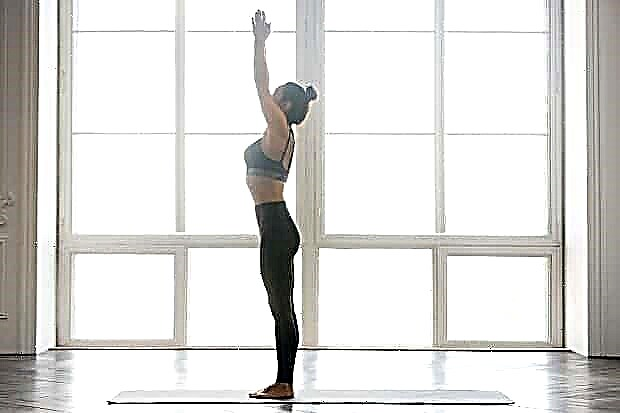
© fizkes - stock.adobe.com
- Lean forward. Flexion is performed in the hip joint, hands are pulled to the floor to a comfortable depth, it is important not to pinch the chest and stretch the pelvic bones up.
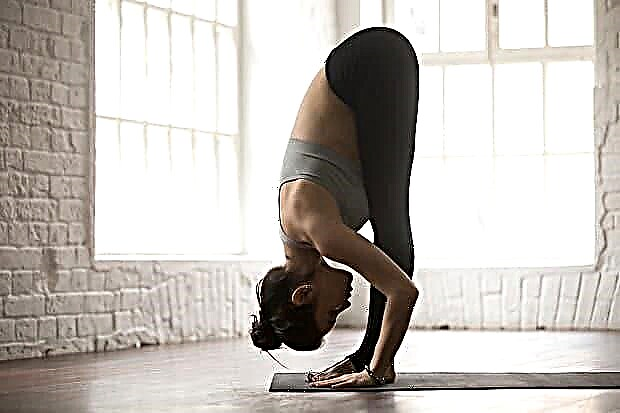
© fizkes - stock.adobe.com
- Angle. The legs are wider than the shoulders, the toes point forward. A forward bend is performed, then - the transfer of body weight to each leg in turn.

- Wide steps. Technically, this is a very deep thrust. From a standing position, feet shoulder-width apart, a wide step forward is performed and the pelvis is lowered closer to the floor. In this position, there is a fixation.

© fizkes - stock.adobe.com
- Wide steps with a U-turn. This is the so-called warrior pose 2. From the above position, a turn occurs along the axis of the spine, hands are drawn to the multidirectional socks.
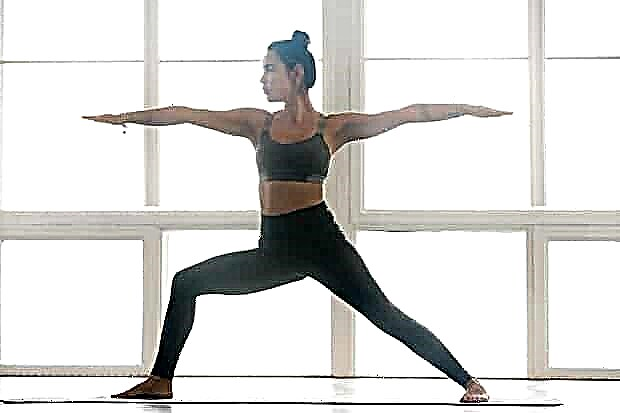
© fizkes - stock.adobe.com
- Warrior's pose 3. The weight is transferred to one leg, the free leg from a wide step is extended into a plane parallel to the floor, the body - into the plane of the leg. It is recommended to stretch your arms forward, it resembles a "swallow".
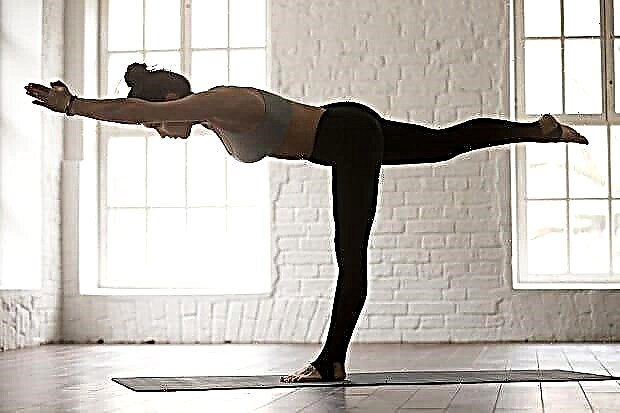
© fizkes - stock.adobe.com
- "The dog is head down." Pose of the letter "L", when the buttocks stretch to the ceiling, arms and feet - to the floor.
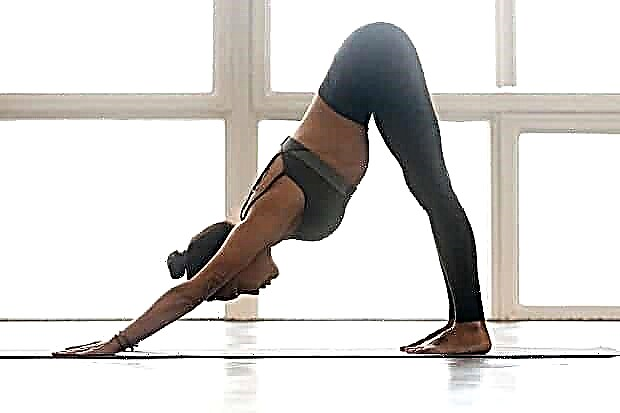
© fizkes - stock.adobe.com
- "Dog head up." The pelvis from the previous asana tilts to the floor, the shoulders stretch to the ceiling along with the crown.
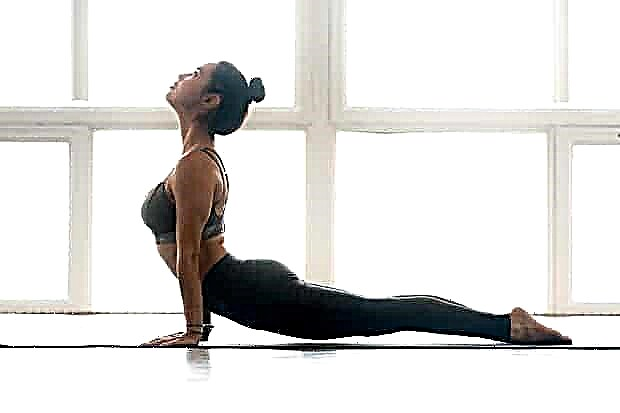
© fizkes - stock.adobe.com
- "Boat", or inverted "L". Sit on the floor on the buttocks, straining the abs, tilt the body back and raise straight legs so that the angle between them and the body is about 90 degrees.
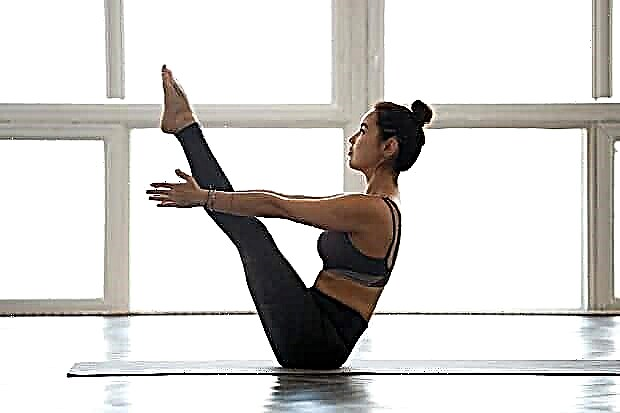
© fizkes - stock.adobe.com
The standard duration of the asana is five deep breaths.
Meditation or relaxation
At the end of each practice, savasana, or corpse posture, is assumed. The practitioner lies on his back and stretches his head and heels in opposite directions, and then sharply relaxes all the muscles of the body and plunges into a meditative state. Its goal is to completely get rid of obsessive thoughts in the head.
Shatkarmas - purification
Shatkarmas are a whole complex of procedures. For some reason, in this regard, they always remember fasting, cleansing with salt and rinsing the nose from a special teapot.But for beginners, nauli is usually advised every morning and a healthy balanced diet. Enemas, fasting and other fun extreme sports - only with the permission of the spiritual teacher. And yes, it should be, and watching videos on YouTube isn't enough.
Marmas
Marmas are energy points on the body that connect the physical world and subtle bodies. These points are known as acupressure zones and are widely discussed in the literature. Modern acupuncture is based on the practice of working with marmas.
In hatha yoga, independent influence on marmas during practice is rare. A person can use concentration on the eyebrow point to practice mindfulness in asana or work out ujayi breathing by pressing the nila and manya marma with the chin in the middle of the neck, in the Adam's apple.
Mudras
Mudras are finger yoga. The positions in which the fingers are folded are also important for the concentration and development of the mind and body.
The need for proper nutrition
A healthy yoga diet is a vegetarian diet that includes milk, dairy products, ghee, and all the spectrum of plant foods you can find. In this tradition, someone counts calories and macronutrients, someone relies on appetite, in general, everyone finds their own way.
Often yoga is confused with diet and gymnastics and begins to almost forcibly refuse meat and fish, suffer, fast and try to become better this way. But in reality, this is unacceptable. A person must come to this on his own.
Slimming effectiveness
Yoga is quite enough as a load for weight loss, although it burns quite a few calories. Physical training strengthens the muscles, but you will have to directly lose weight by revising the diet. The yoga party contributes a lot to this. It's hard to go to a bar and eat a burger with a beer when all your friends go to an eco-cafe and eat kichari and salad.
In general, there is nothing wrong with losing weight with yoga, on the contrary, it motivates many people to change their diet and a more conscious approach to the diet. But of course, if you just want to lose weight and do it faster, it is better to add cardio loads, moderate strength and eat balanced, and not "by all means plant foods."

© fizkes - stock.adobe.com
Should children be engaged?
Children can do asanas, there are no physical contraindications to this. Moreover, in India children practice yoga. But in our country it is something like imposing a spiritual choice on their descendants. Therefore, it is up to the parents to decide whether to send their children to yoga or not.
Contraindications
Yogis themselves believe that there are no contraindications for practice. Mudras can be performed in any state; mantras are also read almost always. Asanas have a bunch of available variations for everyone, in addition, Iyengar's students widely use belts, cubes and other paraphernalia.
It is rationally not worth practicing classes during colds, SARS, exacerbation of chronic diseases and during menstruation for women. ODA and ligament injuries, as well as rehabilitation periods after operations are a limitation, not a contraindication.
You can practice during pregnancy, but only under the guidance of a person who understands the specifics. Ideally, with a medical degree.












